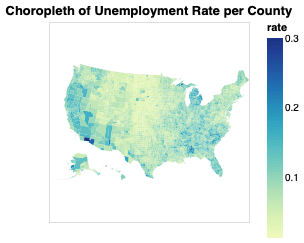Boidflock
This is a Rust implementation of a boid flocking simulation using the ggez graphics crate.
The CLI for this program is built using the structopt crate.
Examples
cargo run --release -- --zoom-scale 0.7 --visual-range 150 --avoid-range 30 --sight-angle 1. --coherence .7 
cargo run --release -- --boid-count 12000 --zoom-scale .35 --visual-range 120 --sight-angle 1.5 --avoid-range 30 --alignment .95 --coherence .45 
Configuration
There are lots of options to change the simulation from its default settings. Here's an example configuration for zooming out with many boids: cargo run --release -- --boid-count 15000 --zoom-scale .3 --visual-range 120 --sight-angle 1.5 --avoid-range 25.
Running cargo run --release -- --help yields a screen with the options shown below:
Boid Flocking Simulation
Andrew Lee
A flocking simulation built in Rust with ggez
USAGE:
boidflock.exe [OPTIONS]
FLAGS:
-h, --help Prints help information
-V, --version Prints version information
OPTIONS:
--seed
Seed to determine initial positions and random rotations applied to boids. This make the simulation
deterministic. If set to default 0, the seed will be randomly generated : u64 [default: 0]
--boid-count Count of boids to simulate : [0, INF) [default: 2000]
--coherence
Coefficient for boid aiming for center of local neighbor mass : [0, 1] [default: 0.035]
--separation
Coefficient for boid avoidance within AVOID_RANGE : [0, 1] [default: 0.25]
--alignment
Coefficient for boid alignment of velocity within SIGHT_RANGE : [0, 1] [default: 0.75]
--avoid-range
Pixel distance for a boid to avoid others in line of sight : [0, INF) [default: 21.]
--visual-range
Pixel sight distance for each boid : [0, INF) [default: 80.]
--sight-angle
Sight pie-slice angle for each boid in radians : [0, 2*PI] [default: 2.3]
--sight-samples
Samples to take get cells within sight angle range : [1, INF) [default: 3]
--max-rand-rotate
Max random velocity rotation angle for boids : [0, 2*PI] [default: 0.3]
--min-veloc
Minimum boid velocity in pixels : [0, MAX_VELOC] [default: 3.]
--max-veloc
Maximum boid velocity in pixels : [MIN_VELOC, INF) [default: 5.]
--cur-cell-neighbors
Maximum number of boid neighbors within current sight range cell to consider for calculations : [0,
BOID_COUNT] [default: 30]
--forward-cell-neighbors
Number of boids in sight range in sight range cell ahead to consider : [0, BOID_COUNT] [default: 10]
--edge-turn-margin
Pixel distance from screen edge for boids to turn away from to stay on screen : [0, INF) [default: 25.]
--edge-turn-factor
Coefficient to turn away from screen edges : [0, 1] [default: 0.2]
--img-scale Scale for boid image : [0, INF) [default: 0.32]
--zoom-scale
Scale to zoom. Above 1 zooms in, below 1 down to 0 zooms out : [0, INF) [default: 0.8]
Information
This has been awesome project for me for studying complex behavior generated out of simple rules.
I learned lots about practical applications of algorithmic complexity and optimization tradeoffs, and how to use a graphics library.
Enjoy the show!








